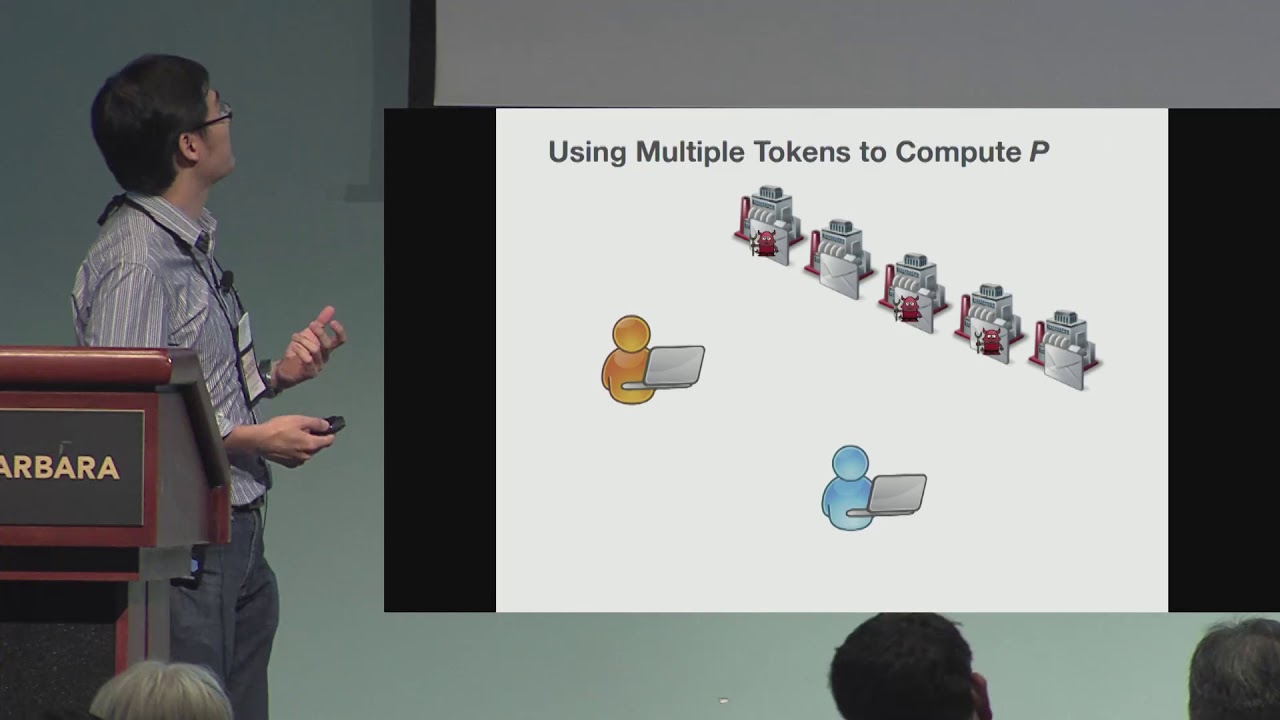Welcome to the resource topic for 2017/1092
Title:
Universally Composable Secure Computation with Corrupted Tokens
Authors: Nishanth Chandran, Wutichai Chongchitmate, Rafail Ostrovsky, Ivan Visconti
Abstract:We introduce the \emph{corrupted token model}. This model generalizes the \emph{tamper-proof token model} proposed by Katz (EUROCRYPT '07) relaxing the trust assumption on the honest behavior of tokens. Our model is motivated by the real-world practice of outsourcing hardware production to possibly corrupted manufacturers. We capture the malicious behavior of token manufacturers by allowing the adversary to corrupt the tokens of honest players at the time of their creation. We show that under minimal complexity assumptions, i.e., the existence of one-way functions, it is possible to UC-securely realize (a variant of) the tamper-proof token functionality of Katz in the corrupted token model with n stateless tokens assuming that the adversary corrupts at most n-1 of them (for any positive n). We then apply this result to existing multi-party protocols in Katz’s model to achieve UC-secure MPC in the corrupted token model assuming only the existence of one-way functions. Finally, we show how to obtain the above results using tokens of small size that take only short inputs. The technique in this result can also be used to improve the assumption of UC-secure hardware obfuscation recently proposed by Nayak et al. (NDSS '17). While their construction requires the existence of collision-resistant hash functions, we can obtain the same result from only one-way functions. Moreover using our main result we can improve the trust assumption on the tokens as well.
ePrint: https://eprint.iacr.org/2017/1092
Talk: https://www.youtube.com/watch?v=8AC9p1QPbAE
See all topics related to this paper.
Feel free to post resources that are related to this paper below.
Example resources include: implementations, explanation materials, talks, slides, links to previous discussions on other websites.
For more information, see the rules for Resource Topics .
